Bike Wonk: Ride Like You’re Invisi … Relevant
It was a typical winter morning in Downtown Orlando. Clear, cool and sunny with normal rush hour traffic. Because it was cool, I was wearing my usual neon yellow jacket. I’m not obsessive about “hi-viz” clothes, but if I’m going to wear a jacket, I figure it may as well be a bright one. I’d just turned onto Rosalind Avenue, a one-way three-lane street with short blocks, lots of signalized intersections and a bike lane. I normally use the bike lane.
On this particular morning I made the right turn onto Rosalind at such a time that it held off most of the heavy northbound traffic. I had the street almost entirely to myself. In my helmet-mounted mirror I could see only one vehicle approaching from behind. A woman was driving a van in the right lane with the right turn signal on. We were both coming up to the intersection with Church Street. I could tell that the van would get to the intersection at the same time I would. I’m heading straight. She’s turning right. I tell myself, “This should be interesting.”
Sure enough, as we reached the intersection, she turned right in front of me. Since I was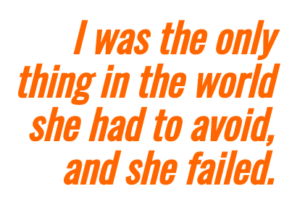 expecting it, it wasn’t a big deal. I tapped my brake and no contact was made, but she missed me by only about a foot. An untrained cyclist might not have had the same outcome.
expecting it, it wasn’t a big deal. I tapped my brake and no contact was made, but she missed me by only about a foot. An untrained cyclist might not have had the same outcome.
The point of this story is not to illustrate the fairly common “right hook” conflict, but why this particular driver did something so obviously stupid. She had no other person or vehicle to pay attention to for the few seconds leading up to our conflict. I was exceptionally conspicuous in my jacket. As it was a one-way street, she had no concern about on-coming left turns. There were no vehicles waiting at the cross street. I was the only thing in the world she had to avoid, and she failed.
I can guess at her thought process. Perhaps she misjudged my speed. Perhaps she assumed I would yield. Or perhaps she was so preoccupied that she was not paying attention to anything outside her lane. Whatever. One thing was clear: Even though I was highly conspicuous, I was not relevant enough for her to make the right decision.
Relevance:
The difference between frustrating routine conflicts and a stress-free ride.
CyclingSavvy co-founder Keri Caffrey shot photos of me at this location to give you a sense of how I would have looked to that driver that morning. The photos show more traffic than was present that day and the bike lane is now painted green. But they should still help you “get the picture.”
I do most of my riding in regular clothing and on streets without bike lanes. Over more than 20 years I’ve never had a right hook conflict (or many close calls of any sort), mostly because I ride in the center of the lane by default. But while wearing a hi-viz jacket and riding in a facility that many think is supposed to “make motorists pay attention” to me, I encountered this conflict. (It’s not the only such conflict I’ve had in bike lanes, just the most noteworthy.)
As cyclists we need to understand the differences between “visible,” “conspicuous,” and “relevant.”
You can be visible and highly conspicuous–and irrelevant, as I was that morning:
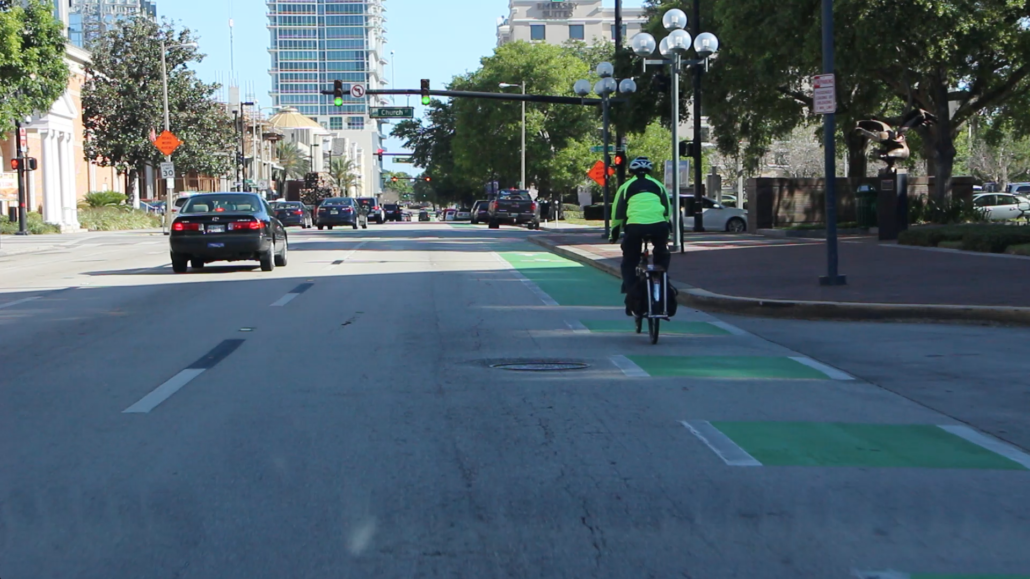
You can be clearly visible, though not highly conspicuous, and yet be very relevant. This photo shows the default position I use on streets without bike lanes:
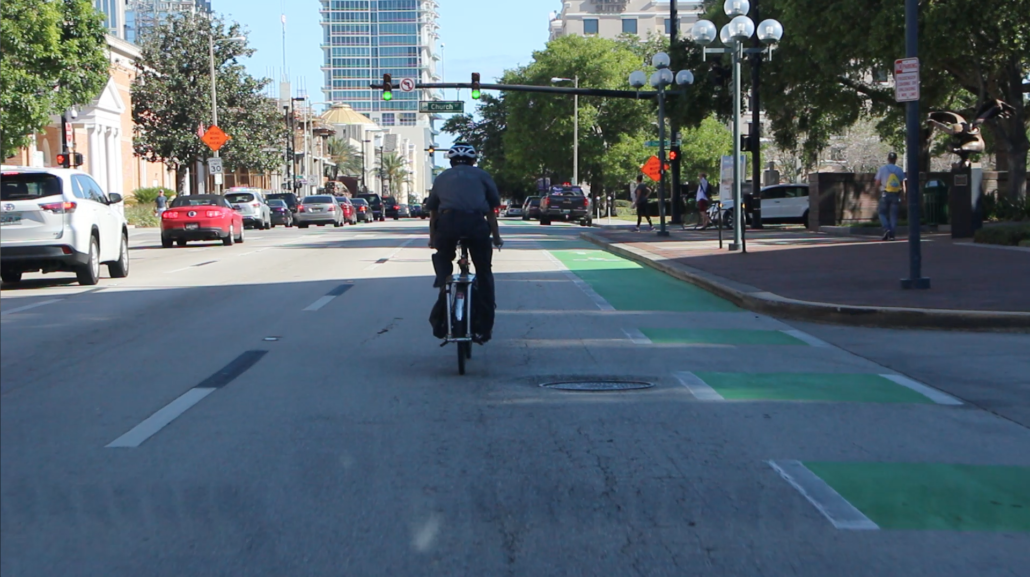
You can dress to be highly conspicuous and yet be completely invisible to a motorist who needs to see you. See how this cyclist in hi-viz is invisible to the driver about to turn left?
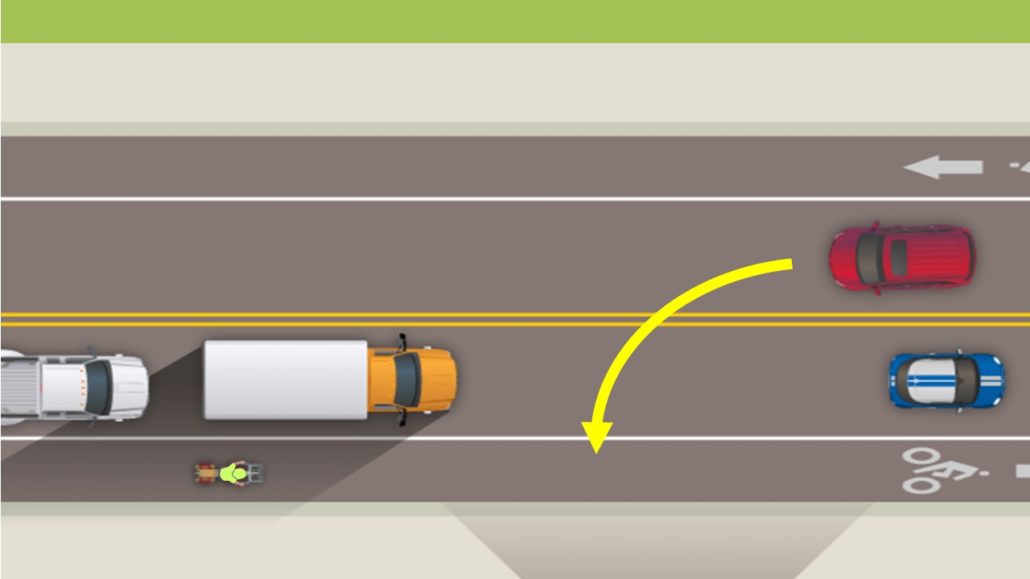
Or you can be visible, conspicuous, and relevant:
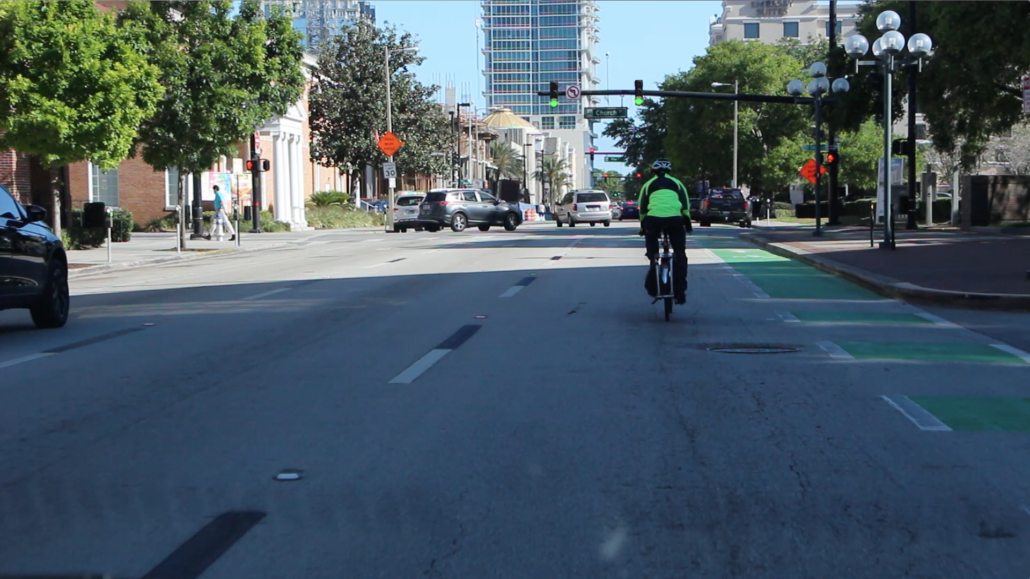
Most cycling safety proponents (and sellers of gizmos) will tell you all about how to be more visible and conspicuous. We hear from lots of cyclists who say they are “doing everything right” and being as conspicuous as possible. Yet they also complain about having too many close calls.
If you’re having close calls, check out the relevance component. CyclingSavvy shows you strategies that will make you as relevant as possible.
You have the power to banish frustrating routine conflicts and enjoy a safer, nearly stress-free cycling experience.
Relevance makes all the difference.
(In a future post I’ll discuss where and when it’s most important and useful to improve your conspicuity, in addition to being visible and relevant.)

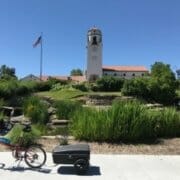


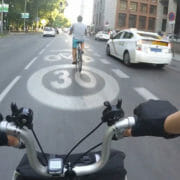
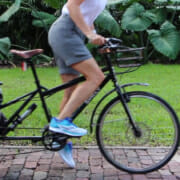
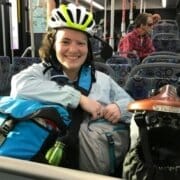

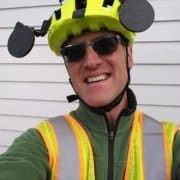



Excellent thoughts and advice. Thanks for helping us consider ways to be safer and enjoy our riding more.
In case any readers are “worried” about whether they “should” be in the lane position Mighk is illustrating, consider the following. A few days ago I was bicycling on my regular commute route (it was not at rush hour however–it was at 1:00pm). A motorist behind me began sounding his horn. He also leaned out his driver’s side window and shouted some words at me. “You’re taking up the whole lane!” My thought: “so are you”.
Gary E. Madine, LCI 323
Agreed, Gary! Motorists never see the irony.
I’m in St. Louis. I find that motorists don’t mind my being on the road, but they don’t want to be behind me. I put the kibosh on incivility with communication. I’ll use either a head turn or a hand signal to indicate: “I know you’re there, buddy. I’ll be out of your way as soon as I can.”
If it’s safe to do so, I’ll wave them around. They always change lanes to pass. (There’s a reason for that. We’ll have to do a future Savvy Cyclist post on the topic. :-) )
So many drivers are not educated on cycling rules of the road. In this situation I would be ready to wait for the vehicle to turn. I know most people don’t know what to do.
What about more education with drivers training?
We certainly want to do motorist education some day, but for now our limited funding means our focus needs to be on what cyclists can do. Some problems, like this one, are really more a perception problem than an education problem. Humans make mistakes in judgement. We have to know how to compensate, or better yet, prevent.
Great post, Mighk Thanks!
Concerning bike lanes, what do you think about wide, right-buffered bike lanes where the buffer disappears before driveways and intersections? I would think that because of its normal travel lane width before right-turn opportunities encouraging motorists to merge before turning, cyclists would be more relevant in such a bike lane than the type of edge bike lane shown in your photo above or a typical door-zone bike lane.
It’s also interesting that the cycle tracks hidden behind a line parked cars makes cyclists not only irrelevant but often invisible, too. But that’s considered “protection” by many cyclists and cycling “advocates.”
I very much appreciate this article. I’m just in shock and confused about one thing. You are a highly skilled and experienced biking safety expert. How can a car get within about a foot of you on a turn. I can only think that you just wanted to see what would happen for the sake of writing this article? But if that is true, why would you take a risk like that? I also ride using lane control (10k miles) and taken the CS class and no car has ever come that close to me.
Since I was in the bike lane, I’d have violated the motorist’s right-of-way if I’d moved out of the bike lane and into the lane control position. So my remaining choices were to slow down or maintain my modest speed.
I’ve been cycling in traffic for over 40 years, and for the first 20 years I was an edge-rider like most people. So I know how close passes feel and right hooks set up. Knowing what was likely to happen made the incident low risk. I was in control of how close the turn was going to be. I’ve been in enough truly risky situations in my over 150,000 miles of riding to know this wasn’t one of them (at least not for me).
I wasn’t doing it for the sake of this article (it was the incident that inspired the article), but I was just curious about how this driver in this situation would behave. Professional curiosity. It was only after the incident that I began to think about why the driver did what she did, and how the incident could be instructive.
I also had a similar situation, although on a much narrower road. The bike lane disappeared to make room for an opposing left turn lane. I could see the motorist’s turn signal on in my mirror, and while I had plenty of time to brake such that there was no real danger, I didn’t have enough time to move out of the bike lane. I was also just so incredulous how the motorist could make such a blatant error. If I had been paying better attention to my mirror, I could have moved into the travel lane earlier, since I already knew about the bike lane ending. https://www.youtube.com/watch?v=TSOrQjgJjdg
The ongoing bike lane could be considered your personal bicyclist’s “through lane” so long as it is away from
any intersection. On approach to an intersection however, an ongoing bike lane ought be considered
a driver’s right-turn-only-lane. (Anybody see how a typical bike lane mucks up the rules of the road?)
To be safest, always get to a place where it is easiest to travel by the rules of the road and merge into
the vehicle through lane. I.e. merge *out* of what is about to become a RTOL. (That best practice applies for
shoulder cycling too.) *And*, even if you desire to turn right yourself, you should first merge out of the
cyclist’s personal through lane and then back into it. The extra caution you’ll be obliged to exercise due to the
confusion created by the presence of the typical bike lane is that you’ll have to make an extra check behind
to your *right* to watch for less savvy through cyclists *and* for impatient motorists who have decided to
drive into the space you just freed to your right. (Anybody see how a typical bike lane mucks up the rules of
the road?)
I’ll make separate point. I didn’t see clearly in the video that oncoming travelers had been afforded a left-turn
only-lane. The curb-to-curb distance appeared constant. So if oncoming travelers did get a LTOL, that grant
usually results in a narrowing of the through lanes. Savvy cyclists know what to do there.